Abstract
Male inbred Fischer rats were fed phenobarbitone-Na at a level of 500 parts/10(6) in the diet for 1 week, followed by 1000 parts 10(6) for 103 weeks at which time the survivors were killed. Thirty-three treated rats survived to 80 weeks. Before 80 weeks, no animals showed hyperplastic lesions. Of the 33 rats surviving 80 weeks and more, 11 had foci of nodular hyperplasia. These foci were usually small, but one animal killed at 102 weeks had a lesion of 0.75 cm diameter, which compressed the surrounding liver. In one case was evidence of local invasion or metastasis found. All the livers had evidence of parenchymal cell damage. No evidence of nodular hyperplasia was found in the controls. It is concluded that there is no evidence to suggest that phenobarbitone-Na induced neoplasm in the liver of male Fischer rats.
Full text
PDF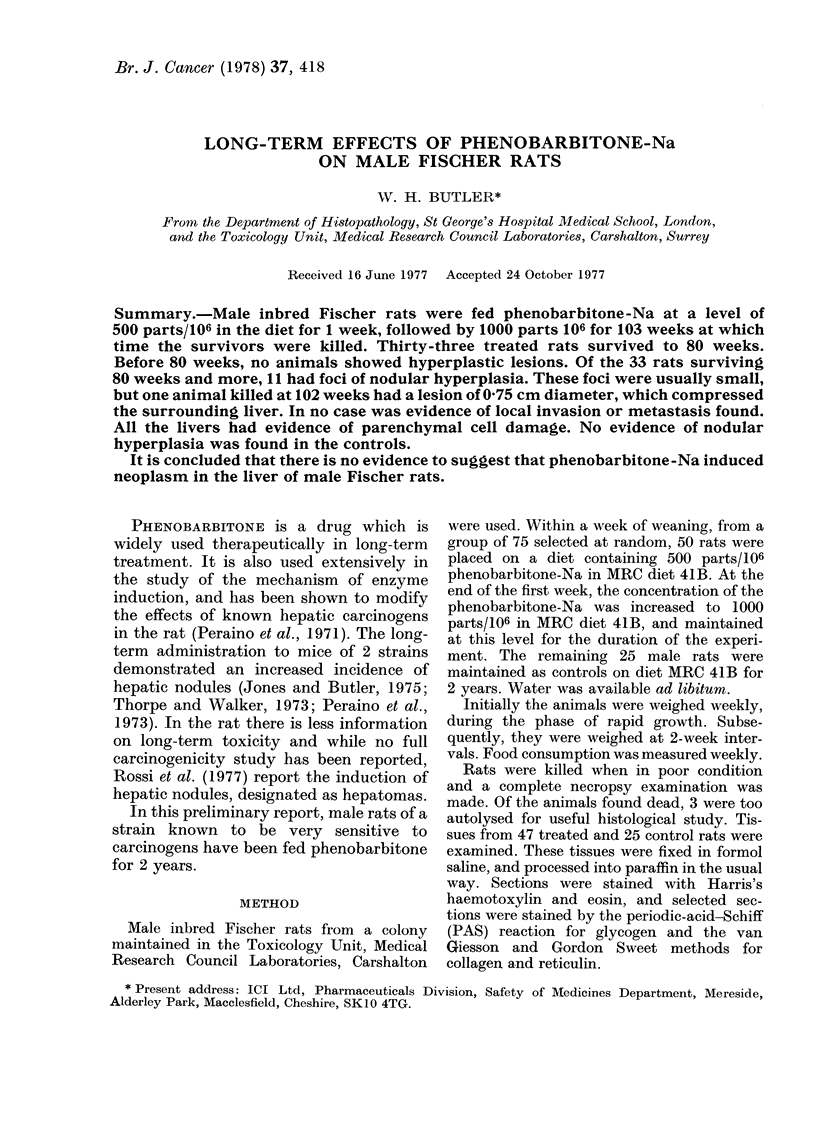
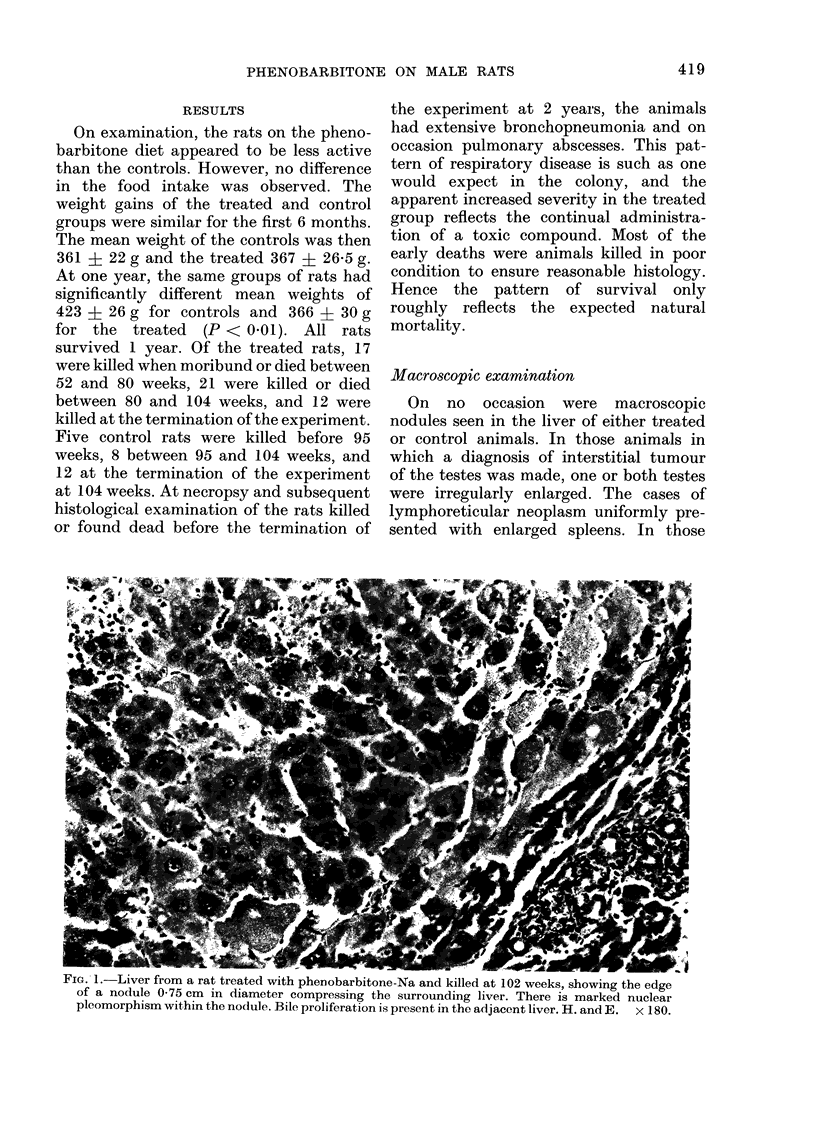
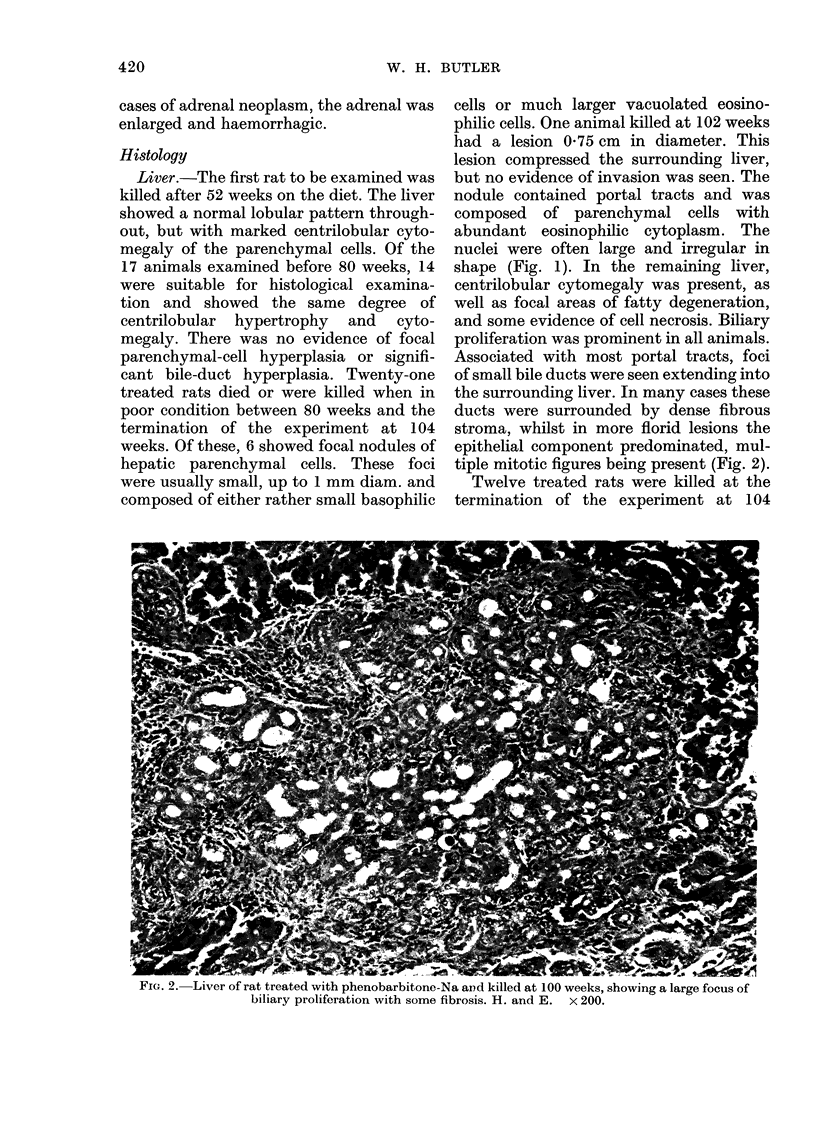
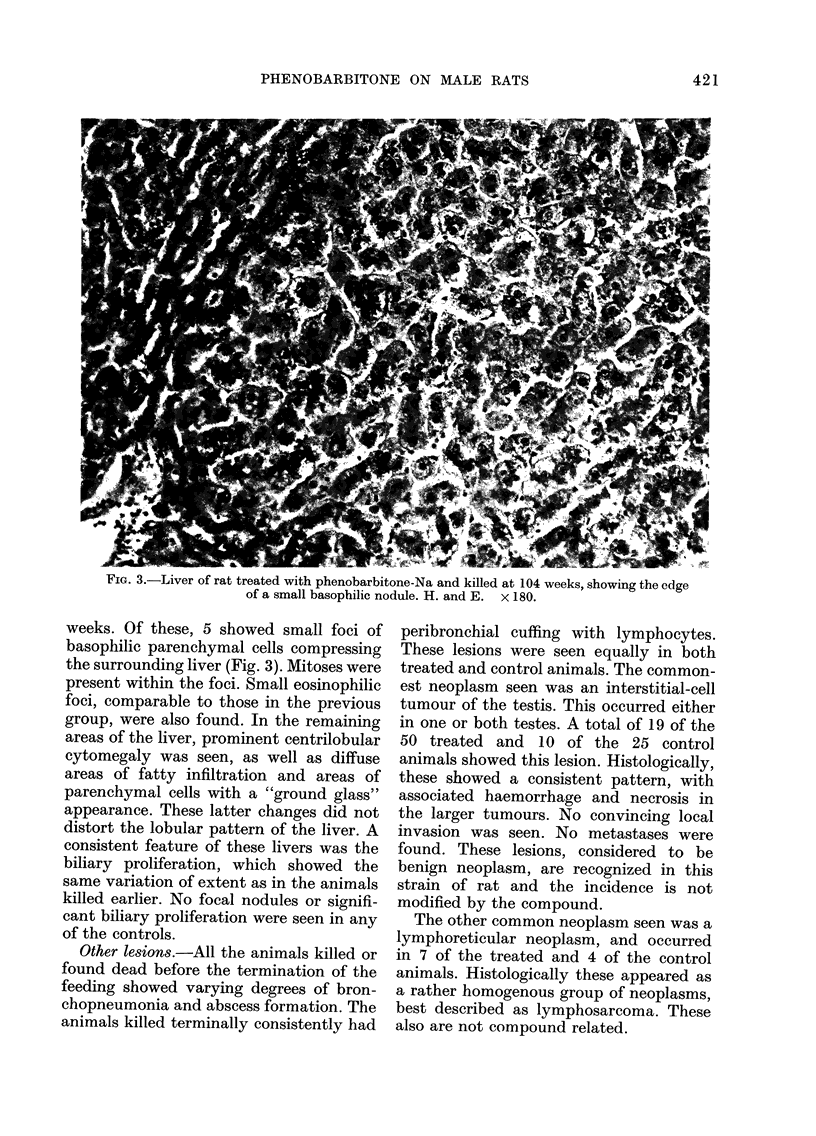
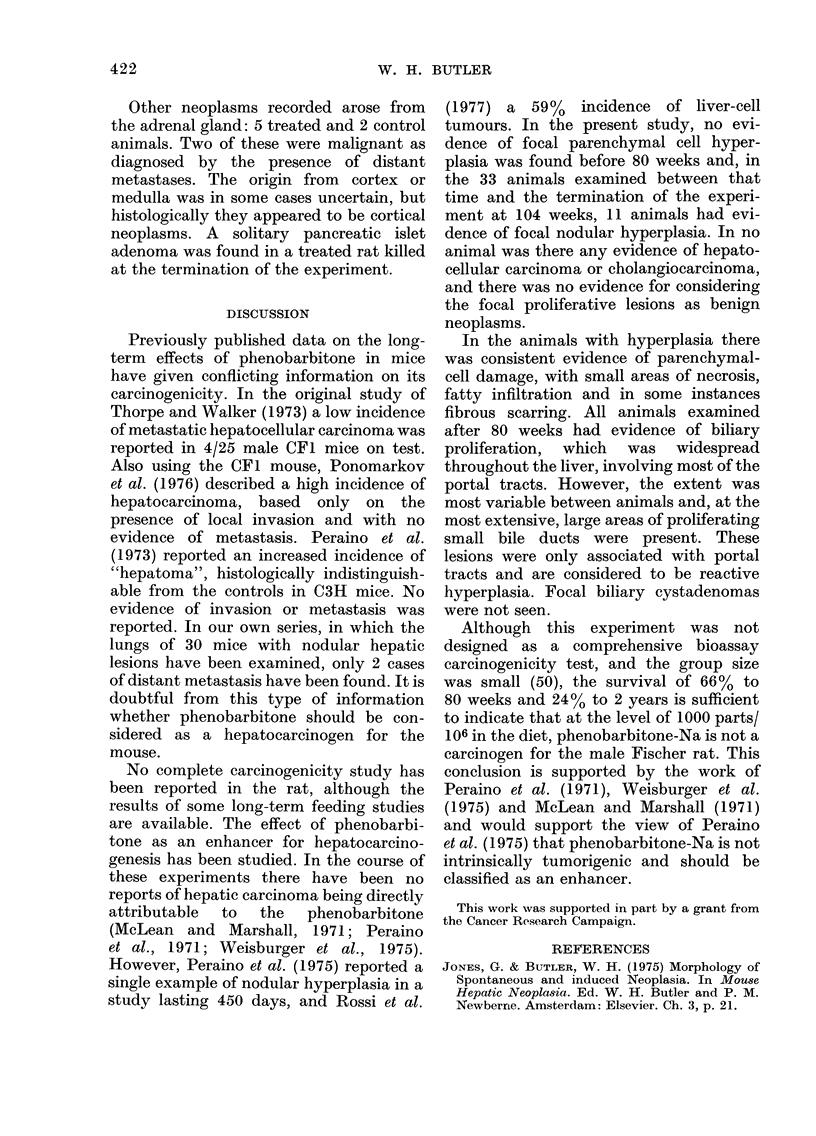
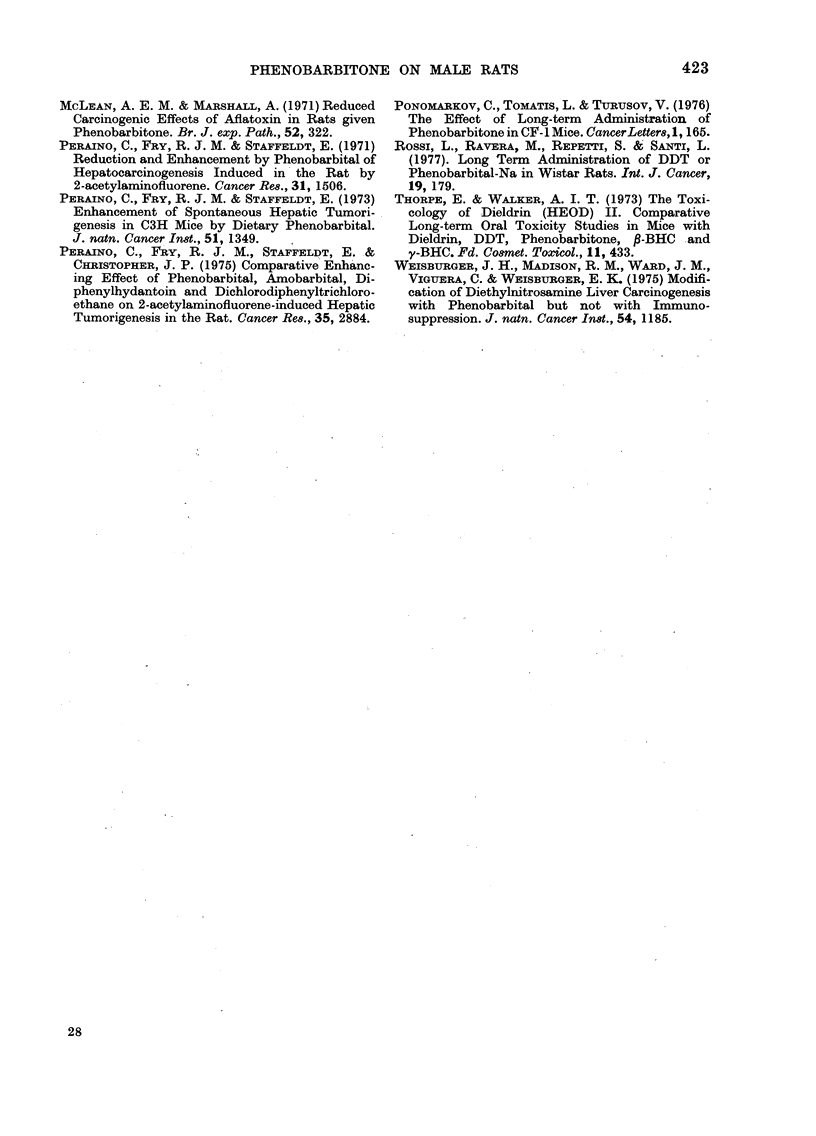
Images in this article
Selected References
These references are in PubMed. This may not be the complete list of references from this article.
- Peraino C., Fry R. J., Staffeldt E. Brief communication: Enhancement of spontaneous hepatic tumorigenesis in C3H mice by dietary phenobarbital. J Natl Cancer Inst. 1973 Oct;51(4):1349–1350. doi: 10.1093/jnci/51.4.1349. [DOI] [PubMed] [Google Scholar]
- Peraino C., Fry R. J., Staffeldt E., Christopher J. P. Comparative enhancing effects of phenobarbital, amobarbital, diphenylhydantoin, and dichlorodiphenyltrichloroethane on 2-acetylaminofluorene-induced hepatic tumorigenesis in the rat. Cancer Res. 1975 Oct;35(10):2884–2890. [PubMed] [Google Scholar]
- Peraino C., Fry R. J., Staffeldt E. Reduction and enhancement by phenobarbital of hepatocarcinogenesis induced in the rat by 2-acetylaminofluorene. Cancer Res. 1971 Oct;31(10):1506–1512. [PubMed] [Google Scholar]
- Rossi L., Ravera M., Repetti G., Santi L. Long-term administration of DDT or phenobarbital-Na in Wistar rats. Int J Cancer. 1977 Feb 15;19(2):179–185. doi: 10.1002/ijc.2910190207. [DOI] [PubMed] [Google Scholar]
- Weisburger J. H., Madison R. M., Ward J. M., Viguera C., Weisburger E. K. Modification of diethylnitrosamine liver carcinogenesis with phenobarbital but not with immunosuppression. J Natl Cancer Inst. 1975 May;54(5):1185–1188. doi: 10.1093/jnci/54.5.1185. [DOI] [PubMed] [Google Scholar]





